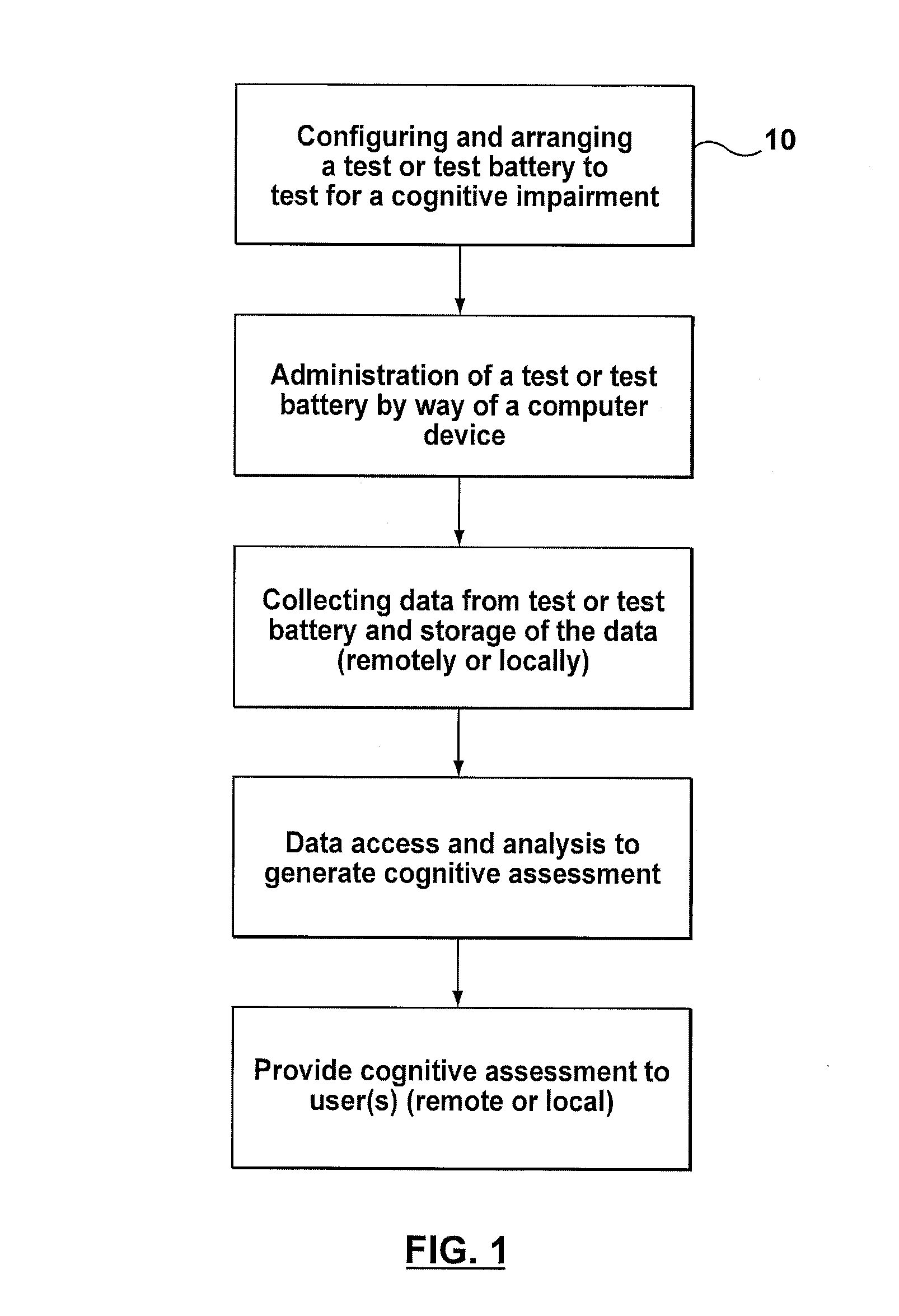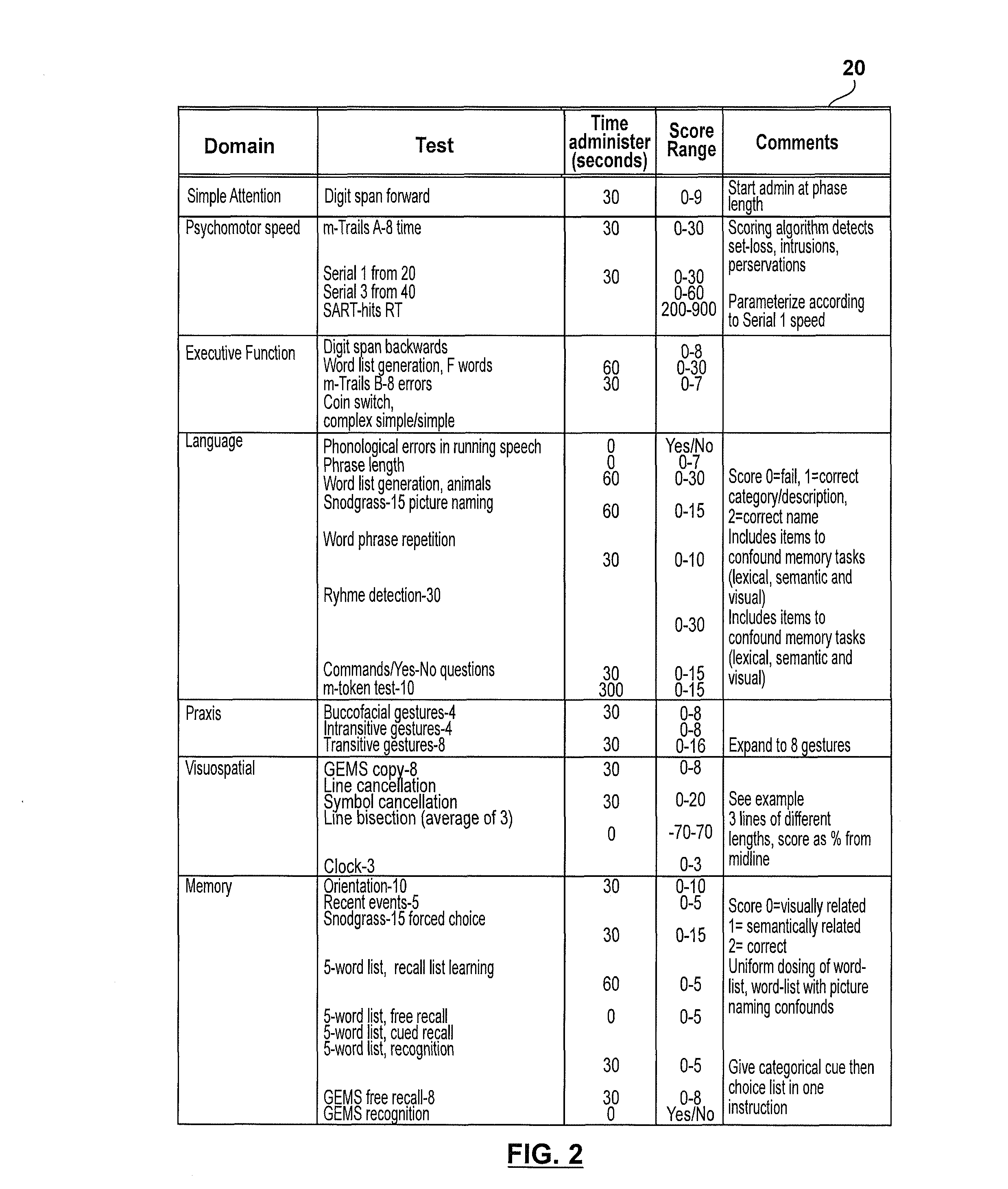Cognitive assessment tool and method
a cognitive assessment and tool technology, applied in the field of cognitive capacity assessment testing systems, can solve problems such as cognitive deficits, inefficiencies in care delivery, and adult morbidity and mortality
- Summary
- Abstract
- Description
- Claims
- Application Information
AI Technical Summary
Benefits of technology
Problems solved by technology
Method used
Image
Examples
example
[0138]A test project of an embodiment of the present invention has been undertaken. A skilled reader will recognize that the details of this test represent only one embodiment of the present invention and do not limit the scope of the invention in any manner. Hardware for the project was selected among mass produced and popular tablet PC devices having built-in sound cards, sufficient powerful for the needs of the project and ergonomic characteristics relevant to the patient population.
[0139]A magnetic stylus was used for the tablet-PC interface to enable the user to rest his or her wrist on the screen. However, the ergonomics of the magnetic stylus were found to be very similar to the ergonomics of a pen and may have resulted in rapid hand movements, extreme tilt of the pen, and hand tremor, each of which can result in unpredictable test results, though such problems were rare in the test implementation. In addition, a parallax was observed in patients asked to handle the magnetic ...
PUM
 Login to View More
Login to View More Abstract
Description
Claims
Application Information
 Login to View More
Login to View More - R&D
- Intellectual Property
- Life Sciences
- Materials
- Tech Scout
- Unparalleled Data Quality
- Higher Quality Content
- 60% Fewer Hallucinations
Browse by: Latest US Patents, China's latest patents, Technical Efficacy Thesaurus, Application Domain, Technology Topic, Popular Technical Reports.
© 2025 PatSnap. All rights reserved.Legal|Privacy policy|Modern Slavery Act Transparency Statement|Sitemap|About US| Contact US: help@patsnap.com



